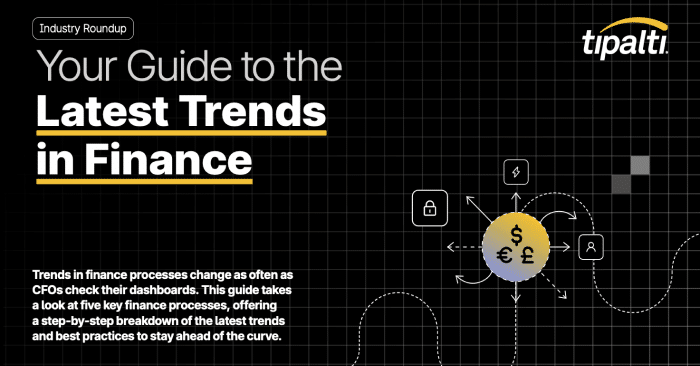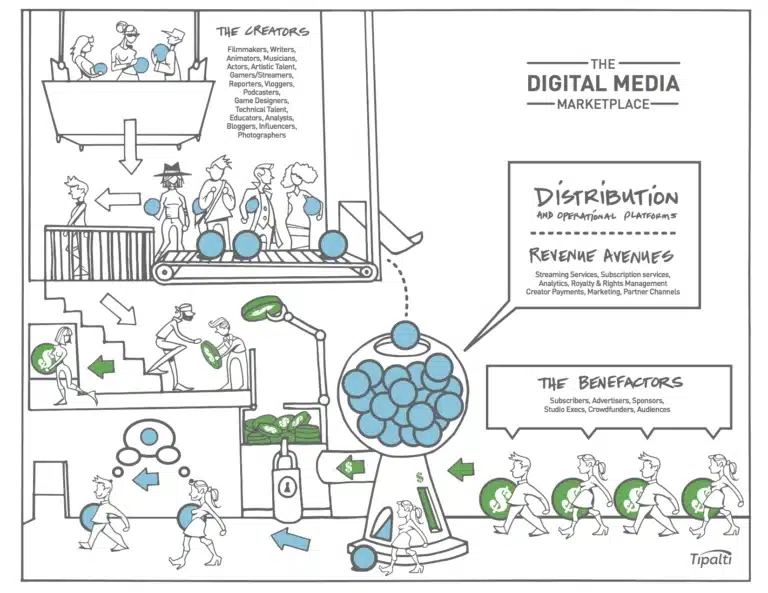
Finance trends shift fast—explore 5 key processes & tips to stay ahead.
Fill out the form to get your free eBook.

Trends in finance processes change as often as CFOs check their dashboards. This guide takes a look at five key finance processes, offering a step-by-step breakdown of the latest trends and best practices to stay ahead of the curve.
Everyone is getting in the content game. In 2018 it was reported that Netflix was planning on spending a staggering $13B on original content. And Amazon was not far behind with a reported $5B spend on big-budget original shows and sports rights. Even Disney, arguably the biggest mega-media conglomerate in the world, is jumping on that streaming bandwagon.
It’s a powerful time to be a creator—audience-centric strategies are driving big business decisions. And, in the new millennium, many media companies are on the verge of being re-defined as digital media marketplaces.
Digital Is Trending
DMM. Digital Media Marketplaces. At their core, these online companies identify how media is created and distributed. Whether it’s books, songs, films, podcasts—the process is predictable.
With Netflix and Amazon disrupting industry standards, traditional media dominators and Big Six film studios are crumbling under new audience preferences. Media is being created at the grassroots level, and what was once impossible to consider viable content (e.g., streaming video game content) is now potentially and culturally relevant.
Sure, going to the cinema and watching Marlene Dietrich on the big screen is fueled with “Golden Age” romanticism, but that’s not what new age consumers want. They’d rather stay on their couch, streaming all ten seasons of Friends.
DMMs Are Changing the Game
When an Instagram post featuring an internet-famous cat can make as much money as a critically-acclaimed indie film, we are living in strange, strange times. But that’s the potential power that DMMs have.
DMMs like Twitch and College Humor have something that big traditional media doesn’t: Democratization and diversity. Anyone with a data plan can be a creator and distribute content as long as there’s an audience for it. And, if that content turns out to be lucrative or compelling, the benefactors will start rolling in. Additionally, with DMMs, you get the “6 Degrees of Separation” effect. One piece of content fuels another and another—by sharing a viral video of a tiny, yodeling boy, you’re opening up your network to comment, share, and create their own media around this Walmart phenomenon.
Today, this is what the DMM model looks like:

In this model, there are two separate cycles both controlled by distribution—a content cycle and a payment cycle. As the above illustration shows, CREATORS create CONTENT for DISTRIBUTION, DISTRIBUTION offers CONTENT for BENEFACTORS, BENEFACTORS pay/subscribe/etc. to the DISTRIBUTION, and DISTRIBUTION pays CREATORS (royalties, licensing, etc.)
Real-Life Example: CREATORS make Game of Thrones (CONTENT). HBO (DISTRIBUTION) pays for it and releases it on its network. Viewers (BENEFACTORS) pay a subscription to watch the show (CONTENT).
The Marketplace Effect
Creators are artists, and artists thrive off the gig economy. An AD can work on three different film sets in the same month, a writer can have a two-month contract then go back to freelancing, a musician can be called in for a last-minute recording session to finish a new track.
Collaborative art is made up of informal marketplaces—it’s technology that’s formalized it so people can get paid.
DMMs take this model to a new, expansive digital level. It happens at a greater scale and with a higher velocity, and it’s as pure a marketplace as Uber, Airbnb, Etsy, or Houzz. Because of this, it has many of the same issues marketplaces do. The creators are more closely tied to the success of the platform—top creators are responsible for launching the “killer apps” that audiences crave and engage with.
Even well-funded DMMs contend with a multitude of challenges that might thwart their success. Audiences might “pony up” and pay for content, but they don’t want to “pay” for content platforms. Because of this, DMMs have to operate within thin profit margins like eCommerce businesses. Companies need to be focused on either driving audiences or helping creators, and back-office operations tend to be heavily automated and ideally platform-controlled.
The New Media Wave
In order to paint a clear picture of the current digital landscape, here are three examples of DMMs that illustrate the next wave of new media:
Wattpad – Wattpad is essentially YouTube for Authors. It’s not just a breeding ground for Harry Potter fanfiction—it’s a place for writers to share their stories and connect with their fans. Recently, Wattpad has introduced in-story ads to their platform and even implemented an ad-free subscription service to enhance the reader experience.
Roblox – Roblox enables anyone to imagine, create, and have fun with friends as they explore millions of interactive 3D experiences produced by independent developers and creators. It’s ranked as one of the top online entertainment platforms for audiences under the age of 18 and is powered by a global community of over four million active users.
Audiomack – Audiomack is here to move music forward. It’s a free, limitless music sharing and discovery platform for artists, labels, and fans. Their model is artist-centric, allowing musicians to upload their music and submit it for “Trending” consideration—a chance to be placed in front of a massive new audience and utilize the Audiomack AMP monetization program to earn a competitive per-stream rate.
So the question is, what’s next for online marketplaces? Will DMMs remain fair, or will artists suffer from a constant drift towards low-end experiences? Will big content swallow small content? And will other forms of media continue to follow this digital trend?
We don’t have all the answers yet, but one thing’s for sure—if the content success of Netflix and Amazon has taught us anything, it’s that DMMs are here to stay. And they’re going to change everything we thought we knew about consuming media.
